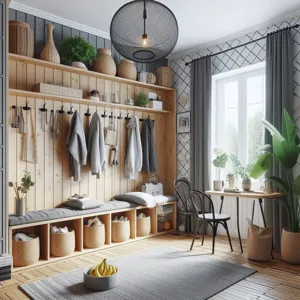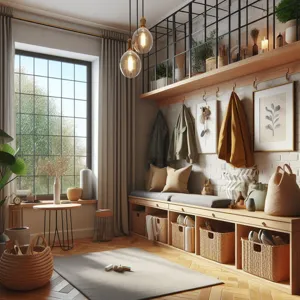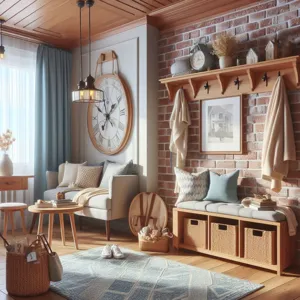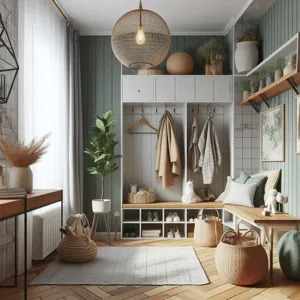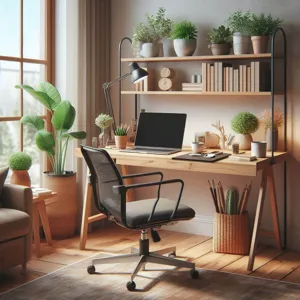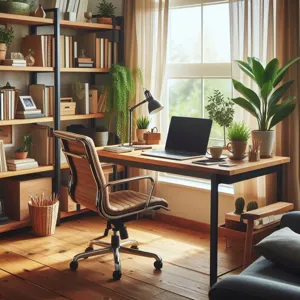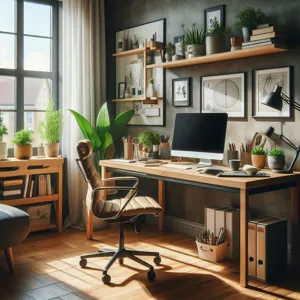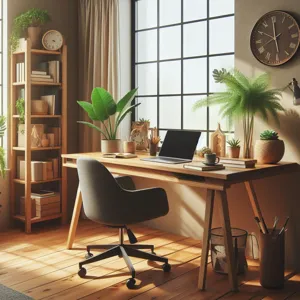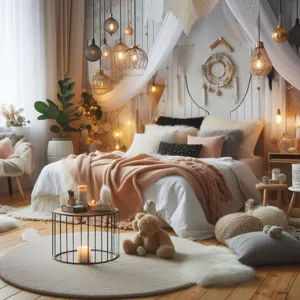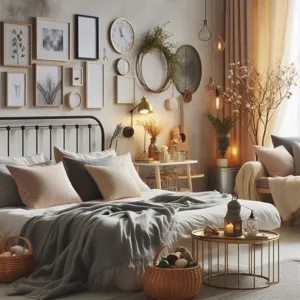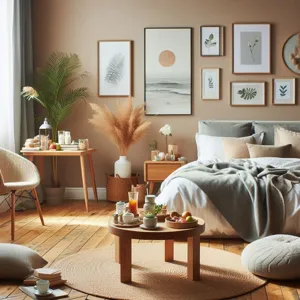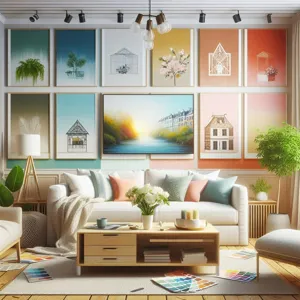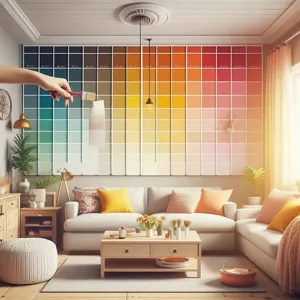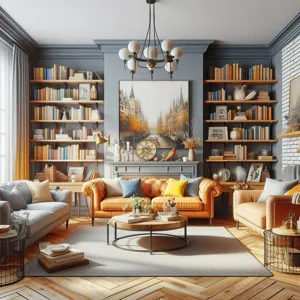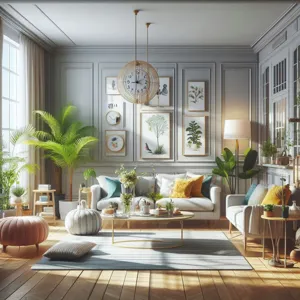Imagine stepping into your backyard and being instantly enveloped in a serene sanctuary, where the hustle and bustle of everyday life fades away, replaced by the soothing sounds of nature and the gentle caress of a warm breeze.
Transforming your outdoor space into a relaxing oasis is not just a dream; it can be your reality with the right guidance and a bit of creativity. In this step-by-step guide, we’ll explore how to turn your backyard into a tranquil retreat, perfect for unwinding after a long day or hosting intimate gatherings with friends and family. From selecting the ideal plants and furniture to creating cozy nooks and adding ambient lighting, we’ll cover everything you need to know to cultivate a peaceful environment that reflects your personal style. Get ready to ditch the chaos and embrace the calm as we embark on this journey to create your very own outdoor paradise!
1. Introduction: The Benefits of a Relaxing Outdoor Oasis

In our fast-paced, technology-driven world, finding a serene escape within the comforts of our own homes has never been more essential. Transforming your backyard into a relaxing outdoor oasis offers a multitude of benefits that extend far beyond aesthetics; it cultivates a sanctuary for rejuvenation, relaxation, and connection with nature. Imagine stepping outside your door to be greeted by the gentle rustle of leaves, the sweet fragrance of blooming flowers, and the soothing sounds of water cascading from a fountain or pond.
Creating a personal retreat not only enhances your overall quality of life but also encourages you to spend more time outdoors, promoting physical health and well-being. Research has shown that exposure to nature can reduce stress levels, boost mood, and even improve cognitive function. Whether you’re sipping your morning coffee in a cozy nook or hosting evening gatherings under twinkling lights, your outdoor oasis can be a space for mindfulness and reflection, fostering a deeper connection with yourself and your loved ones.
Moreover, an inviting outdoor space can enhance your home’s value and appeal, making it a worthwhile investment. It serves as a versatile extension of your living area, perfect for entertaining guests, enjoying family time, or simply unwinding after a long day. In this guide, we will explore the various elements that contribute to a relaxing outdoor oasis, from the selection of plants and furniture to the incorporation of water features and ambient lighting. Let’s embark on this journey to transform your backyard into a peaceful retreat that you and your family can enjoy for years to come.
2. Assessing Your Backyard Space
Before diving into the exciting world of landscaping and décor, it’s essential to take a step back and thoroughly assess your backyard space. This crucial first step sets the foundation for your outdoor oasis, allowing you to visualize how best to transform the area into a serene retreat.
Start by observing the layout of your yard. Take note of its dimensions, shape, and any existing features, such as trees, shrubs, or pathways. Are there areas that receive ample sunlight, or are there shaded spots that could be perfect for lounging? Understanding these elements will help you determine where to place seating, gardens, or water features.
Next, consider the terrain. Is your yard flat, or does it have slopes and dips? Hills can provide a beautiful backdrop for a tiered garden or a cozy nook, while flat areas are often ideal for patios and fire pits. Don’t forget to check the soil quality as well; this is vital if you plan to incorporate plants or a vegetable garden into your design.
Take a moment to identify any existing limitations or challenges in your backyard. Are there drainage issues that need to be addressed? Are there unsightly fences or utility boxes that could detract from your oasis? Acknowledging these challenges upfront will allow you to develop creative solutions as you plan your outdoor haven.
Finally, think about your personal preferences and lifestyle. Do you envision a space for entertaining friends and family, or do you seek a quiet corner for meditation and reflection? Perhaps you want a vibrant garden filled with native plants or a minimalist area with sleek furniture. Sketch out a rough plan, jotting down ideas that resonate with you.
By taking the time to assess your backyard space thoughtfully, you’ll create a solid blueprint that reflects your vision and caters to your needs, setting the stage for a truly relaxing outdoor oasis.
3. Defining Your Vision: Style, Theme, and Purpose
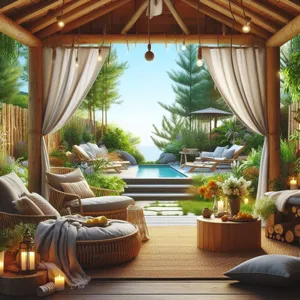
Before diving into the physical transformation of your backyard, it’s essential to take a step back and define your vision. This is the foundational step that will guide every decision you make, from plant selection to furniture placement. Consider what style resonates with you—do you envision a contemporary space with clean lines and minimalistic decor, or perhaps a cozy, rustic retreat adorned with natural materials?
Once you’ve settled on a style, think about the theme you want to incorporate. Themes can range from tropical paradise to Mediterranean escape, or even a serene Zen garden. Each theme brings its own unique charm and character, setting the tone for your outdoor oasis. You may want to draw inspiration from nature, travel experiences, or even your favorite vacation spot.
Next, consider the purpose of your outdoor space. Will it be a tranquil haven for relaxation and meditation, a lively area for entertaining family and friends, or a multifunctional space that accommodates both? Identifying the primary function you want your backyard to serve will help you choose the right elements that enhance its usability.
Write down your ideas, sketch out a rough layout, and gather images that inspire you. By clearly defining your vision, you’re not only setting a direction for your project but also ensuring that the final result is a harmonious blend of style, theme, and purpose—a true reflection of your personal sanctuary. This thoughtful planning phase is crucial to creating a backyard that you will love and enjoy for years to come.
4. Essential Elements of a Backyard Oasis
Creating a truly relaxing outdoor oasis requires more than just a collection of furniture and plants; it’s about cultivating an environment that promotes serenity and comfort. Here are the essential elements that will transform your backyard into a personal retreat.
**1. Comfortable Seating:** The cornerstone of any outdoor oasis is comfortable seating that invites you to unwind. Opt for plush lounge chairs, a cozy hammock, or a stylish outdoor sofa adorned with soft cushions. Consider incorporating varied seating options, such as a swinging bench or a fire pit surrounded by sturdy chairs, to accommodate different moods and gatherings.
**2. Lush Greenery:** Surround yourself with nature’s beauty by incorporating a mix of plants, trees, and flowers. Choose a variety of foliage to create layers and depth in your landscape design. Incorporating fragrant herbs, vibrant seasonal blooms, and evergreens can provide both visual interest and a soothing aroma. Don’t forget to include some vertical elements, such as trellises or hanging planters, to maximize space and create a sense of enclosure.
**3. Water Features:** The calming sound of gently flowing water can instantly elevate the tranquility of your backyard. Consider adding a small fountain, pond, or even a birdbath to attract wildlife and create a serene atmosphere. The sight and sound of water not only soothe the soul but can also mask unwanted noise from nearby streets or neighbors.
**4. Ambient Lighting:** As day fades into night, the right lighting can create a magical ambiance. Incorporate soft, warm lighting through string lights, lanterns, or solar-powered garden lights. Place lights strategically around pathways, seating areas, and plants to highlight features and ensure safety. A flickering candle or a stylish fire pit can also provide a cozy glow for evening gatherings.
**5. Personal Touches:** Finally, make the space your own with personal touches that reflect your style and interests. Add decorative elements such as outdoor rugs, artwork, or sculptures that resonate with you. Incorporate cozy throws or pillows to provide warmth during cooler evenings. Remember, this is your sanctuary, and it should be a reflection of who you are.
By thoughtfully integrating these essential elements into your backyard design, you’ll create a relaxing outdoor oasis that beckons you to unwind and enjoy the beauty of nature, right in your own home.
5. Step 1: Planning and Design
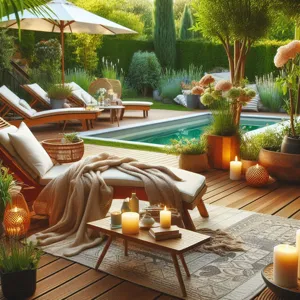
Creating a relaxing outdoor oasis begins with thoughtful planning and design. This initial step is crucial, as it sets the foundation for your entire project. Start by envisioning how you want to use your backyard. Will it be a serene retreat for solo relaxation, a vibrant space for entertaining friends, or a family-friendly area for play and enjoyment? Take the time to jot down your ideas and prioritize your needs.
Next, evaluate your existing space. Consider the layout, the amount of sunlight different areas receive throughout the day, and any natural features you may want to highlight, such as trees, flower beds, or water elements. Sketch a rough layout of your yard, marking the locations of these features alongside potential areas for seating, pathways, and other elements like fire pits or outdoor kitchens.
Don’t forget to think about the ambiance you wish to create. Are you envisioning a lush garden filled with vibrant flowers and greenery, or a minimalist space with clean lines and modern furnishings? Consider the colors, textures, and materials that resonate with you.
Finally, set a budget. Determine how much you are willing to spend and allocate funds to different aspects of your project, such as landscaping, furniture, and decor. Having a clear budget will help keep your project on track and prevent overspending.
By dedicating time to this planning phase, you will ensure that your outdoor oasis not only meets your personal style but also caters to your lifestyle, creating a harmonious environment where you can unwind and rejuvenate. Once your plan is in place, you’ll be ready to dive into the exciting next steps of transforming your backyard into a personal paradise.
6. Step 2: Choosing the Right Plants and Landscaping
Choosing the right plants and landscaping is a crucial step in transforming your backyard into a serene outdoor oasis. The selection of flora can significantly influence the ambiance, functionality, and overall aesthetic of your space. Begin by considering the climate and soil type in your area, as these factors will determine which plants will thrive in your garden. Research native plants that not only require less maintenance but also provide a natural habitat for local wildlife. Incorporating a mix of perennials, annuals, and evergreens will ensure that your garden remains vibrant throughout the seasons.
Next, think about the layout. Create a harmonious balance between hardscaping—such as paths, patios, and decking—and softscaping, which includes your lush greenery and flowers. Use larger plants, such as ornamental grasses or shrubs, to create natural barriers or privacy screens. This adds depth to your space and makes it feel more secluded and intimate.
Consider adding flowering plants with varying bloom times to provide continuous color and fragrance throughout the year. Perennial flowers like lavender and coneflowers not only attract pollinators but also bring a delightful scent to your outdoor retreat. Don’t forget about the importance of texture; combining plants with different leaf shapes and sizes can create visual interest and a sense of lushness.
Additionally, think about the mood you want to create. If relaxation is your goal, opt for calming colors like soft greens, blues, and purples. Planting fragrant herbs such as rosemary or mint can also enhance the sensory experience of your oasis. For those who seek a more vibrant atmosphere, consider a mix of bold annuals and tropical plants to energize the space.
Lastly, pay attention to the layout of your plants. Arranging them in clusters rather than in straight lines can create a more natural feel. Use pathways and borders to guide the eye through the garden and encourage exploration. By thoughtfully choosing and arranging your plants, you’ll lay the foundation for a tranquil outdoor environment that invites you to unwind and connect with nature.
7. Step 3: Selecting Furniture and Decor
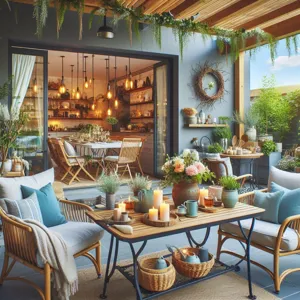
Selecting furniture and decor is one of the most exciting steps in the process of transforming your backyard into a serene outdoor oasis. This is where your personal style truly shines and where comfort meets aesthetics. Start by considering the overall vibe you want to create. Are you aiming for a cozy, rustic retreat, a sleek modern space, or perhaps a tropical paradise? Your vision will guide your choices.
Begin with the essentials: seating. Look for weather-resistant materials like aluminum, teak, or synthetic wicker, which not only withstand the elements but also offer durability and comfort. Opt for plush cushions in colors and textures that harmonize with your garden’s palette. A well-placed hammock or a couple of vibrant bean bags can also add a casual, inviting touch that encourages relaxation.
Next, think about tables. A sturdy coffee table can serve as a gathering point for drinks and snacks, while a dining table will set the stage for al fresco meals with family and friends. Consider incorporating versatile options, such as nesting tables or an extendable dining table, to accommodate different occasions.
Once you have your basic furniture in place, it’s time to layer in decor that reflects your personality. Outdoor rugs can define spaces and add warmth, while string lights or lanterns can create an enchanting ambiance as the sun sets. Don’t overlook the power of greenery; potted plants or vertical gardens can bring life to your area and complement the natural beauty around you.
Finally, personal touches—a collection of your favorite outdoor candles, weather-resistant artwork, or even a fire pit—can make your backyard feel uniquely yours. Selecting the right furniture and decor not only enhances the visual appeal of your outdoor space but also lays the foundation for countless moments of relaxation and joy. So, take your time, explore various styles, and curate a space where you’ll love to unwind, entertain, and create lasting memories.
8. Step 4: Incorporating Water Features
### Step 4: Incorporating Water Features
Water features can truly transform your backyard into a serene oasis, adding both visual appeal and soothing sounds that promote relaxation. Whether you opt for a grand fountain, a tranquil pond, or a simple birdbath, the presence of water can create a calming atmosphere that invites you to unwind and connect with nature.
Begin by considering the size and scale of your outdoor space. A large pond can serve as a stunning focal point, providing a habitat for fish and aquatic plants, while smaller water features like tabletop fountains or wall-mounted cascades can fit snugly into tight corners or patios. Choose a style that complements your overall design theme—rustic stone fountains can evoke a natural feel, while sleek, modern water installations add a contemporary touch.
Once you’ve selected the type of water feature that suits your backyard, think about its placement. Position your feature where it can be easily viewed from your main sitting areas, such as your patio or deck. This ensures that you can enjoy the gentle sound of flowing water while sipping your morning coffee or lounging with a good book. Additionally, consider how the water feature interacts with existing landscaping. Surround it with lush greenery, colorful flowers, or smooth pebbles to create a harmonious scene that enhances your oasis.
Don’t forget about the maintenance aspect. While water features can be low-maintenance, regular cleaning and occasional checks on water levels and pumps will keep them functioning well. If you’re feeling adventurous, consider adding aquatic plants like water lilies or floating ferns, which not only beautify your pond but also contribute to a balanced ecosystem.
Lastly, enhance your water feature with lighting. Incorporating soft LED lights can create a magical ambiance in the evening, transforming your backyard into a captivating retreat after sunset. With the gentle glow reflecting off the water, you’ll create a peaceful environment perfect for evening gatherings or quiet moments of reflection.
By thoughtfully incorporating water features into your backyard design, you can elevate your outdoor space into a relaxing oasis that beckons you to escape the hustle and bustle of daily life.
9. Step 5: Lighting Ideas for Ambiance
Creating the perfect ambiance in your outdoor oasis hinges significantly on the right lighting. The right illumination can transform a simple backyard into a magical retreat, ideal for evening gatherings, quiet moments of reflection, or romantic dinners under the stars. Here are some enchanting lighting ideas to elevate the atmosphere in your transformed space.
**1. String Lights:** One of the most popular and effective ways to add a warm glow is through string lights. Drape them across your patio, wrap them around trees, or hang them from pergolas to create a whimsical feel. Choose soft white or warm yellow bulbs to cast a gentle light that promotes relaxation and conversation.
**2. Solar-Powered Path Lights:** Enhance the safety and aesthetics of your garden pathways with solar-powered lights. These eco-friendly options charge during the day and automatically illuminate at night, guiding your guests through your outdoor haven. Opt for designs that suit your style—whether sleek and modern or rustic and charming.
**3. Lanterns and Candles:** For a touch of romance, incorporate lanterns and candles into your design. Place them on tables, hang them from hooks, or set them along walkways to create flickering pools of light. Consider using flameless candles for a worry-free alternative that still provides the mesmerizing glow of real flames.
**4. Spotlighting Focal Points:** Highlight specific features of your backyard, like a beautifully shaped tree, a water feature, or a stunning piece of garden art, with strategically placed spotlights. This not only draws attention to these elements but also adds depth and drama to your outdoor space.
**5. Fire Pits:** A fire pit serves as both a source of warmth and light, providing a cozy gathering spot for family and friends. The soft flickering flames create an inviting atmosphere, perfect for roasting marshmallows or sharing stories long into the night.
**6. Under-Bench Lighting:** If you have seating areas in your backyard, consider adding under-bench lighting. This subtle touch not only improves visibility but also adds a layer of sophistication to your space, making it feel more like an outdoor lounge.
By thoughtfully incorporating these lighting ideas, you can create an inviting and serene ambiance that encourages relaxation and enjoyment in your outdoor oasis. Whether you’re hosting a lively barbecue or enjoying a quiet evening alone, the right lighting will enhance every moment spent in your transformed backyard.
10. Step 6: Creating Cozy Zones for Relaxation
Creating cozy zones for relaxation in your backyard is all about designing spaces that invite you to unwind and enjoy the tranquility of nature. Start by identifying different areas within your outdoor space that can serve unique purposes—think of a reading nook, a meditation corner, or a space for evening gatherings with friends.
Begin by choosing comfortable seating options that complement the style of your oasis. Plush outdoor cushions, hammocks, or even a swinging bench can create inviting spots for lounging. Consider using weather-resistant furniture that not only adds comfort but also ensures durability against the elements.
Once you have your seating figured out, enhance these zones with thoughtful decor. Layering rugs can define the area and add warmth, while soft throw blankets can invite snuggling on cooler evenings. Don’t forget about lighting! String lights, lanterns, or solar-powered garden lights can create a magical ambiance as the sun sets, allowing you to enjoy your outdoor haven well into the night.
Incorporating natural elements is key to creating a serene environment. Surround your cozy zones with fragrant plants or flowering shrubs to engage the senses. You can also add privacy with trellises, outdoor curtains, or strategically placed potted plants that help create a secluded retreat from the hustle and bustle of everyday life.
Finally, consider adding personal touches that reflect your personality—whether it’s a small fountain that provides soothing sounds, a fire pit for warmth and storytelling, or a selection of your favorite outdoor games. Each cozy zone should feel like a little escape, encouraging you to disconnect from the chaos and reconnect with yourself or loved ones. With these elements in place, your backyard will transform into a true outdoor oasis, beckoning you to relax and rejuvenate whenever you step outside.
11. Step 7: Adding Outdoor Accessories and Personal Touches
Once you’ve established the foundational elements of your backyard oasis, it’s time to infuse it with personality and charm through outdoor accessories and personal touches. These finishing details not only enhance the aesthetic appeal but also create a welcoming atmosphere that reflects your unique style.
Start by selecting a cohesive color palette that complements your existing landscape and furniture. Consider vibrant throw pillows, soft outdoor rugs, and colorful cushions that invite relaxation and comfort. These simple additions can transform a basic seating area into an inviting lounge where you can unwind with a good book or entertain friends.
Next, think about lighting options that will create a magical ambiance as the sun sets. String lights draped across pergolas or trees provide a whimsical glow, while lanterns and solar-powered garden lights add both practicality and beauty. Consider incorporating candles for a romantic touch, or opt for fire pits to create a cozy gathering spot on cooler evenings.
Incorporating greenery is also a fantastic way to enhance your outdoor space. Potted plants, hanging baskets, or even a vertical garden can bring life and color, while also improving air quality. Choose plants that thrive in your climate and require minimal upkeep, allowing you to enjoy your oasis without the stress of constant maintenance.
Don’t forget about personal touches that tell your story. Perhaps it’s a mosaic birdbath that showcases your artistic flair, or a collection of garden sculptures that spark conversation. Incorporate items like family heirlooms or travel souvenirs that evoke fond memories and make the space feel like home.
Lastly, consider adding functional accessories such as outdoor dining essentials, blankets for cooler nights, or even a small bar cart stocked with your favorite beverages. These practical additions ensure your outdoor oasis is not only visually appealing but also ready for entertaining and relaxation.
By thoughtfully selecting and arranging outdoor accessories and personal touches, you’ll create a serene retreat that beckons you to step outside and enjoy the beauty of your transformed backyard. Your oasis will become a cherished haven for relaxation, connection, and joy—an extension of your home that you and your loved ones can savor for years to come.
12. Step 8: Maintenance Tips for Your Oasis
Creating a relaxing outdoor oasis is just the beginning; maintaining its beauty and functionality is key to ensuring it remains a sanctuary for years to come. Regular upkeep not only preserves the aesthetic appeal of your space but also enhances its longevity and enjoyment. Here are some essential maintenance tips to keep your backyard retreat in top shape.
1. **Regular Cleaning**: Just like any indoor space, your outdoor oasis needs regular cleaning. Sweep away leaves and debris, wipe down outdoor furniture, and periodically wash cushions to prevent mold and mildew. Depending on your climate, you may need to do this weekly or bi-weekly to keep everything looking fresh.
2. **Pruning and Trimming**: Plants are the heart of your oasis, and maintaining them is crucial. Regularly prune shrubs and trees to encourage healthy growth and to prevent overgrowth that can detract from your space. This not only keeps your plants looking tidy but also allows for better air circulation and sunlight penetration.
3. **Seasonal Check-Ups**: The changing seasons bring different challenges. In the fall, clear out leaves and prepare your garden for winter. In the spring, inspect your plants for any winter damage and start replanting annuals or perennials. Summer maintenance might include regular watering schedules and checking for pests.
4. **Pest Control**: An outdoor oasis can attract unwanted guests. Keep an eye out for pests like aphids, spider mites, and snails. Utilize organic pest control methods or introduce beneficial insects like ladybugs to keep your plants healthy without compromising your ecosystem.
5. **Furniture Care**: Protect your outdoor furniture from the elements by applying weatherproofing treatments. Regularly check for any signs of wear and tear, and consider storing cushions and accessories indoors during harsh weather to extend their lifespan.
6. **Water Features**: If your oasis includes a fountain or pond, regular maintenance is key. Clean the water features to prevent algae buildup, and check the water level regularly to ensure it remains at optimal levels. This will keep your oasis not only visually appealing but also serene with the soothing sounds of flowing water.
7. **Color Updates**: Over time, colors may fade due to sun exposure. Consider refreshing the paint on any wooden structures or adding new accents through colorful planters or decorative elements. This can rejuvenate the overall look of your oasis and keep it inviting.
By incorporating these maintenance tips into your routine, you’ll ensure that your backyard oasis remains a tranquil escape from the hustle and bustle of everyday life. Consistent care not only enhances the beauty of your outdoor space but also makes it a welcoming retreat for friends, family, and yourself for years to come.
13. Budgeting for Your Backyard Transformation
When it comes to transforming your backyard into a relaxing outdoor oasis, budgeting is a crucial step that can make or break your project. Start by assessing your overall vision: what elements do you want to incorporate? Perhaps a tranquil water feature, lush landscaping, cozy seating areas, or a fire pit for evening gatherings? Having a clear concept will help you allocate your budget effectively.
Begin with a comprehensive list of all the elements you wish to include. This might encompass materials for landscaping, furniture, lighting, and any additional features, like outdoor cooking equipment. Once you have your wish list, research the costs associated with each item. Online marketplaces, local garden centers, and home improvement stores are great resources for price comparisons.
Don’t forget to factor in potential labor costs if you plan to hire professionals for installation or design. If you’re going the DIY route, budget for tools and equipment rentals that might be necessary to bring your vision to life.
It’s also wise to set aside a contingency fund—typically around 10-15% of your total budget—to handle unexpected expenses that may arise during the transformation process. This way, you won’t be caught off guard by surprises that could derail your plans or compromise the quality of your project.
Finally, keep in mind that creating a backyard oasis doesn’t have to happen all at once. You can break your project into phases, allowing you to spread out costs over time while still enjoying the transformation along the way. By carefully budgeting for your backyard transformation, you can ensure a beautiful and relaxing outdoor space that meets your needs without exceeding your financial limits.
14. Safety Considerations for Outdoor Spaces
Creating a relaxing outdoor oasis is an exciting endeavor, but it’s essential to prioritize safety to ensure that your tranquil retreat remains a worry-free haven. As you embark on this transformation, keep in mind several key safety considerations that will protect both your space and those who enjoy it.
First and foremost, assess the terrain of your backyard. Uneven ground can lead to trips and falls, so consider leveling out any bumpy areas and filling in holes to create a smooth surface. If you’re installing pathways or patios, opt for non-slip materials that provide stability, even when wet.
Next, pay attention to the placement of furniture and decor. Ensure that chairs, tables, and other elements are positioned thoughtfully to avoid overcrowding and to create clear pathways for movement. Additionally, if you have children or pets, opt for furnishings with rounded edges and avoid sharp corners that could pose a risk of injury.
Lighting is another critical aspect of safety. Adequate outdoor lighting not only enhances the ambiance of your oasis but also helps prevent accidents after dark. Illuminate pathways, seating areas, and any steps or elevations with a combination of ambient lights, spotlights, and solar-powered fixtures to ensure visibility and security.
Finally, consider the materials you use for building structures like decks, pergolas, or fences. Ensure that they are treated and maintained to withstand the elements and prevent deterioration. Regularly inspect your outdoor space for any hazards, such as loose boards, rusty nails, or unstable furniture.
By prioritizing these safety considerations, you can create an inviting outdoor oasis that serves as a peaceful escape while keeping everyone who enjoys it safe and sound. With a focus on both beauty and safety, your backyard can become a cherished retreat for relaxation and enjoyment.
15. Conclusion: Enjoying Your New Outdoor Sanctuary
As you step back to admire your newly transformed outdoor oasis, there’s an unmistakable sense of accomplishment that washes over you. This space, once merely an extension of your home, has evolved into a sanctuary where nature and comfort converge harmoniously. The vibrant colors of blooming flowers dance in the gentle breeze, while the sound of trickling water from your carefully placed fountain serenades you, inviting relaxation and peace.
Imagine sinking into your plush lounge chair with a good book in hand, enveloped by the soothing aromas of lavender and rosemary wafting from your herb garden. Perhaps you envision hosting intimate gatherings with friends and family around a cozy fire pit, sharing stories and laughter under a starlit sky. Your outdoor oasis is not just a place; it’s an experience—a retreat from the chaos of everyday life.
In this serene setting, you can indulge in mindfulness practices, such as yoga or meditation, rejuvenating your spirit while breathing in the fresh air. The subtle sounds of nature, from chirping birds to rustling leaves, create a tranquil backdrop that enhances your moments of reflection and relaxation.
As you settle into your new outdoor sanctuary, remember to embrace the changing seasons. Each season brings its own unique beauty and opportunities for enjoyment. In the summer, host barbecues and pool parties; in the fall, savor the crisp air while sipping warm cider by the fire; and in winter, decorate with twinkling lights to create a festive atmosphere.
Ultimately, your backyard transformation is more than just landscaping; it’s about crafting a space that resonates with your lifestyle and enhances your well-being. So take a deep breath, soak in the beauty around you, and enjoy every moment spent in your very own outdoor retreat. This is your haven—where relaxation meets nature—and it’s time to make the most of it.
As we wrap up our guide on transforming your backyard into a relaxing outdoor oasis, we hope you’re feeling inspired to embark on this rewarding journey. By following these step-by-step instructions, you can create a personal haven that not only enhances your home’s aesthetic but also provides a serene escape from the hustle and bustle of daily life. Whether it’s incorporating lush greenery, comfortable seating, or soothing water features, every detail you add will contribute to a tranquil atmosphere where you can unwind and recharge. So gather your tools, unleash your creativity, and let your backyard bloom into the peaceful retreat you’ve always dreamed of. We can’t wait to see the stunning transformations you achieve—share your progress and final results with us, and let’s celebrate the beauty of outdoor living together!

